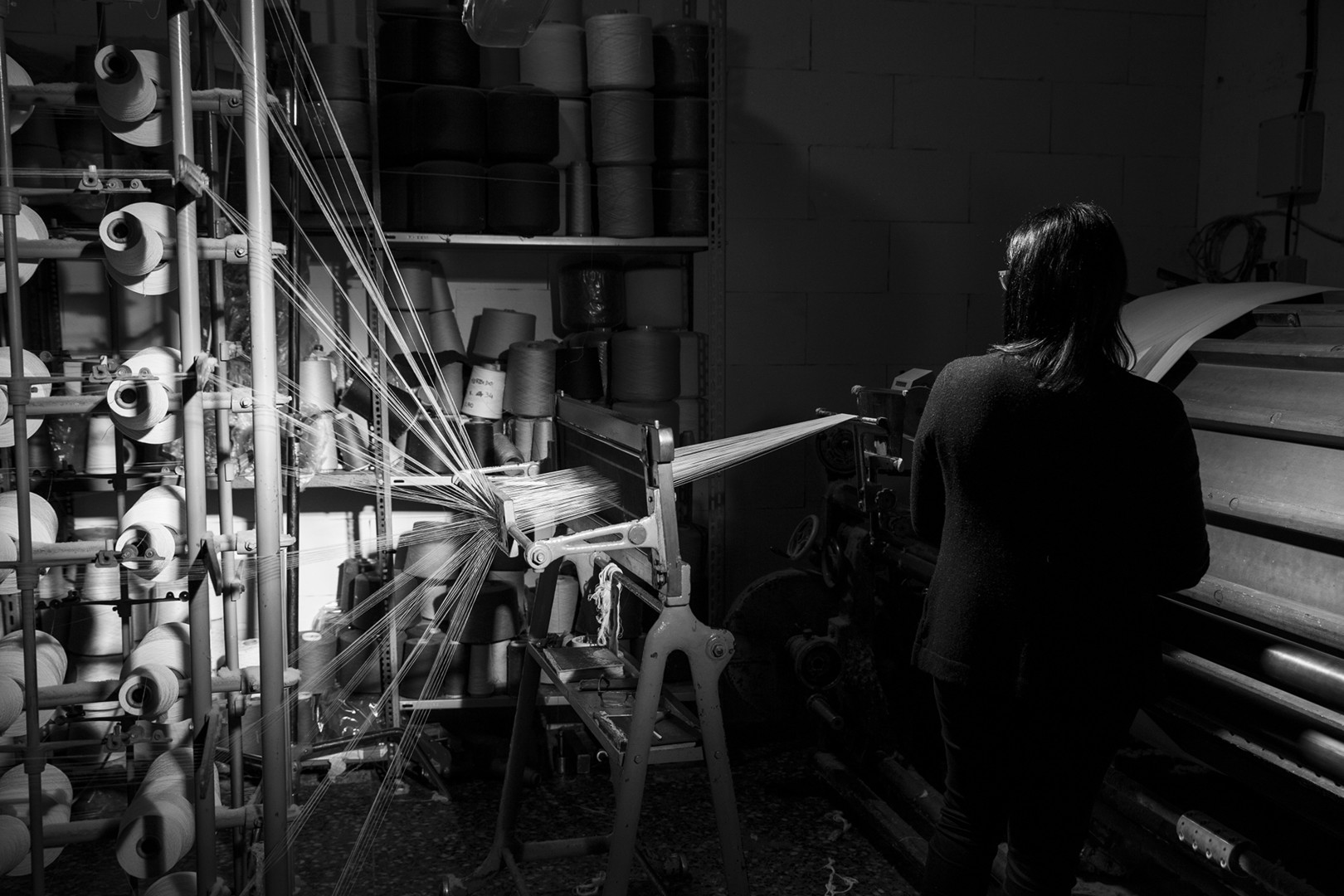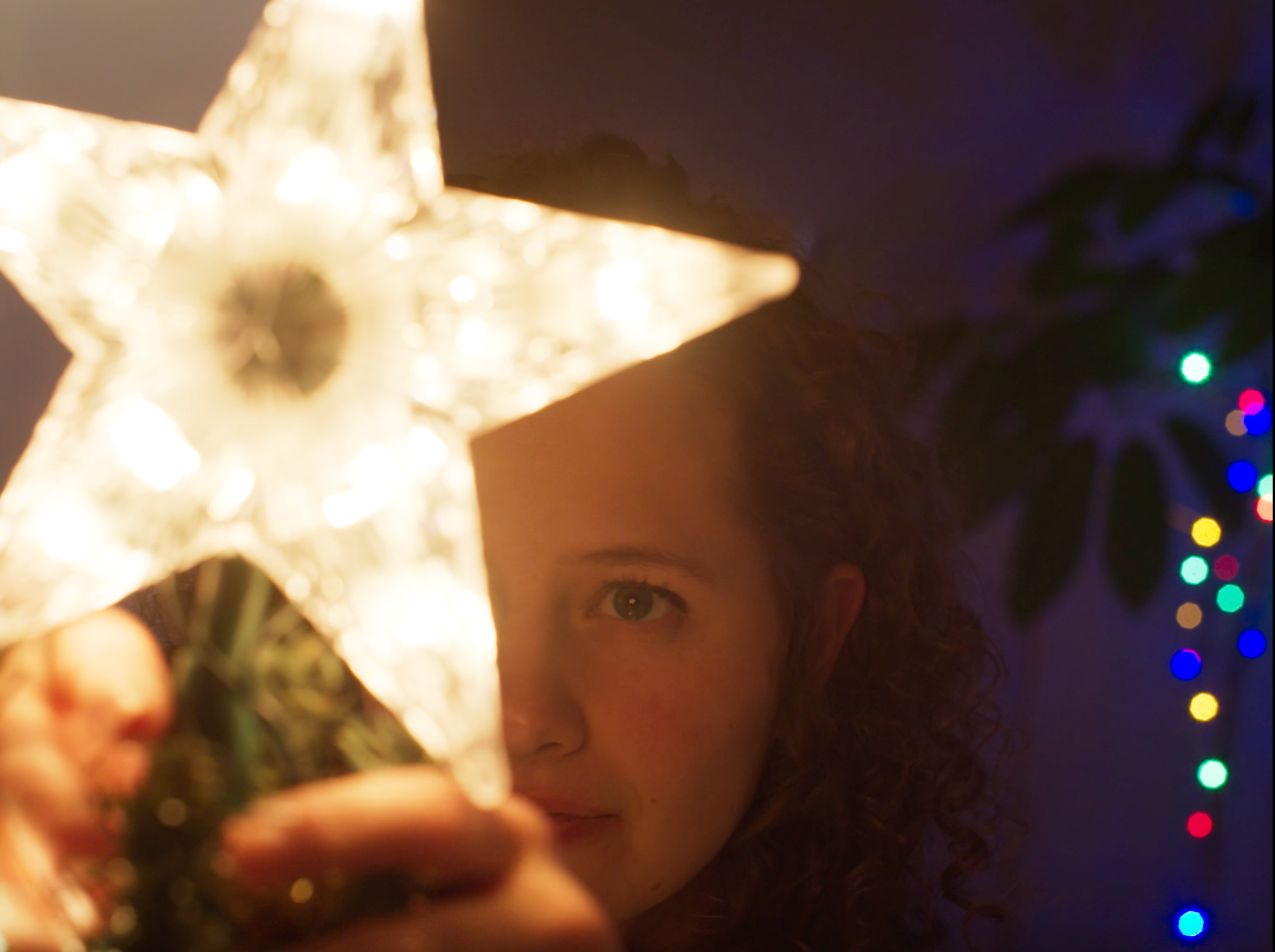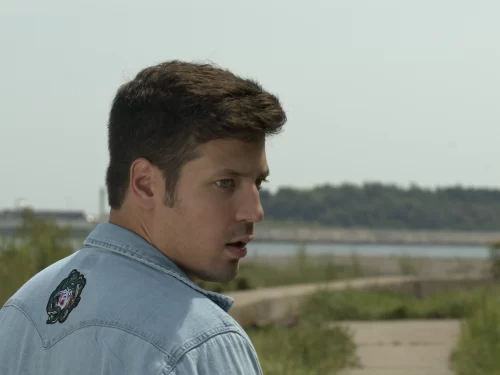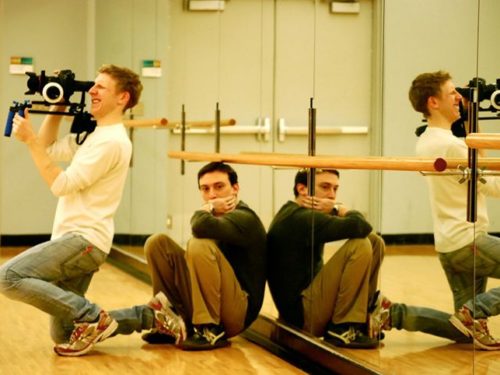To preview the 2021 Flickers’ Rhode Island International Film Festival, Robert Delany discussed some of the most exciting films with their creators. The final talk is with Emilio Vavarella and how his film Genesis fits within a larger art installation
Emilio Vavarella’s Genesis (Italy, 2021) is an experimental documentary that shows the intricate workings of one of the world’s first computers — the Jacquard loom — and the year-long process of his mother using the machine to create a fabric of Vavarella’s genetic information. Vavarella, a PhD Candidate in Film and Visual Studies and Critical Media Practice at Harvard University, draws connections between weaving, DNA, and machinery, which speaks to his research in the connections between biological and computational life. The film is part of a larger installation project called rs548049170_1_69869_TT (The Other Shapes of Me), which incorporates tapestries and writing alongside Vavarella’s filmmaking.
Beyond the fascinating theoretical implications of the film, Vavarella captures the unique visual and sonic aspects of the loom. He highlights the beauty of this centuries-old machine as Genesis harkens back to some of the seminal works of experimental filmmaking, such as Ballet Mécanique (Dudley Murphy and Fernand Léger, 1924) and Man with a Movie Camera (Dziga Vertov, 1929).
We spoke with Vavarella before Genesis screens at the 2021 Rhode Island International Film Festival about the impact of binary technologies, creating the soundscape of the Jacquard loom, and how the film is ultimately a tribute to his mother.
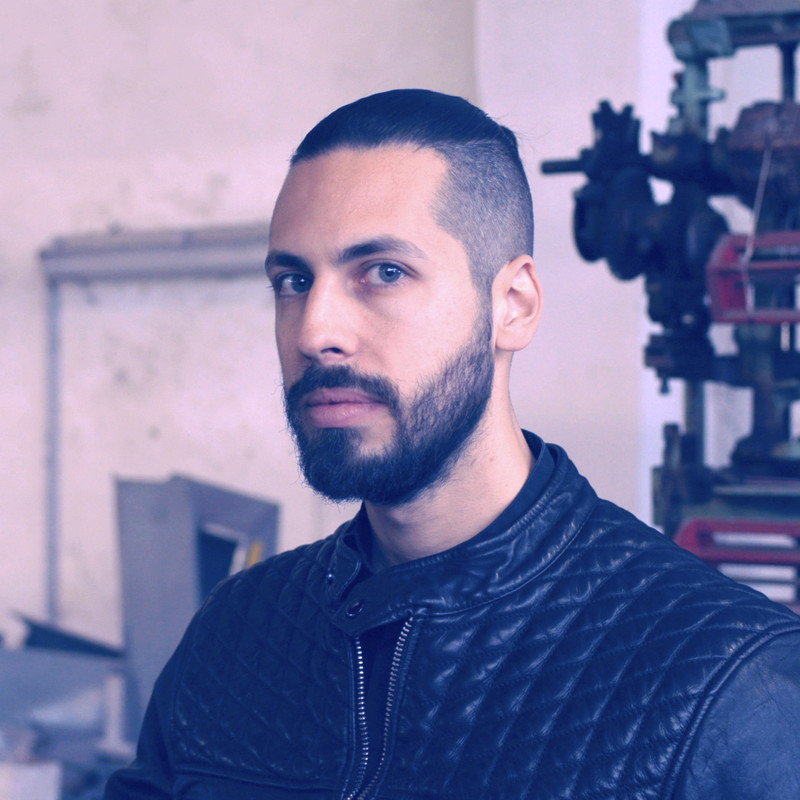
How did you originally become interested in the Jacquard loom?
I have always been fascinated by the human relationship with technology, and in particular by the impact binary technologies (think about calculators, computers, GPS, smartphones) have on our lives. While studying the technical developments of binary technology I came across the Jacquard loom, which is the first automated computer of the industrial age: a machine able to translate binary instructions on punched cards into woven textiles. Once I learned about it, I started to work on the idea that resulted in Genesis.
In Genesis, your mother weaves a fabric with the loom that contains your genetic information, which you describe as creating an “interplay between biological and computational life.” What are the key similarities between weaving, genetic information, and computation?
There are several interplays, and I have explored many of them along with 14 other thinkers in the book rs548049170_1_69869_tt (Mousse Publishing), edited with Paolo Mele and Claudio Zecchi. Above all is the simple fact that through the notion of a ‘genetic code’ biological life becomes computable. The genetic code is nothing but the resultant codification of the information contained in our cells — a process carried out by binary systems identical to those of the first mechanical looms. Another interplay: DNA and textiles do not ‘represent’ information but instead they ‘present’ it in a perfect homology between form and content. This property distinguishes DNA and textiles from media such as painting, photography, or writing. In other words, structure and information, as much in textiles as in DNA, coincide. Whence the idea of processing my genetic code, with the fundamental contribution of my mother, utilizing the Jacquard loom.
Related: RIIFF 2021 Q&A: Sandrine Stoïanov and Jean-Charles Finck’s The World Within (2020)
How did you aim to contrast the movements of your mother and the motion of the loom?
As soon as I saw the loom in action I wanted to capture its energy by getting as close as possible, pushing myself, the camera, and the operator, Corrado Punzi, almost inside the moving cogs of the machine. Corrado and I, often squeezed between a wall and a moving mechanism, worked really hard at finding the best angles and perspectives, the camera’s point of view reaching as if it were being swallowed by the machine that it tried to document. My mother’s movements were very different: there was no mechanical violence, just the affective intensity of a labor of deep care and incredible precision. I tried to capture this with the same care and attention that my mom dedicated to her work. What is left is a symphony of human and mechanical movements, an ever-changing rhythm of human and non-human motion.
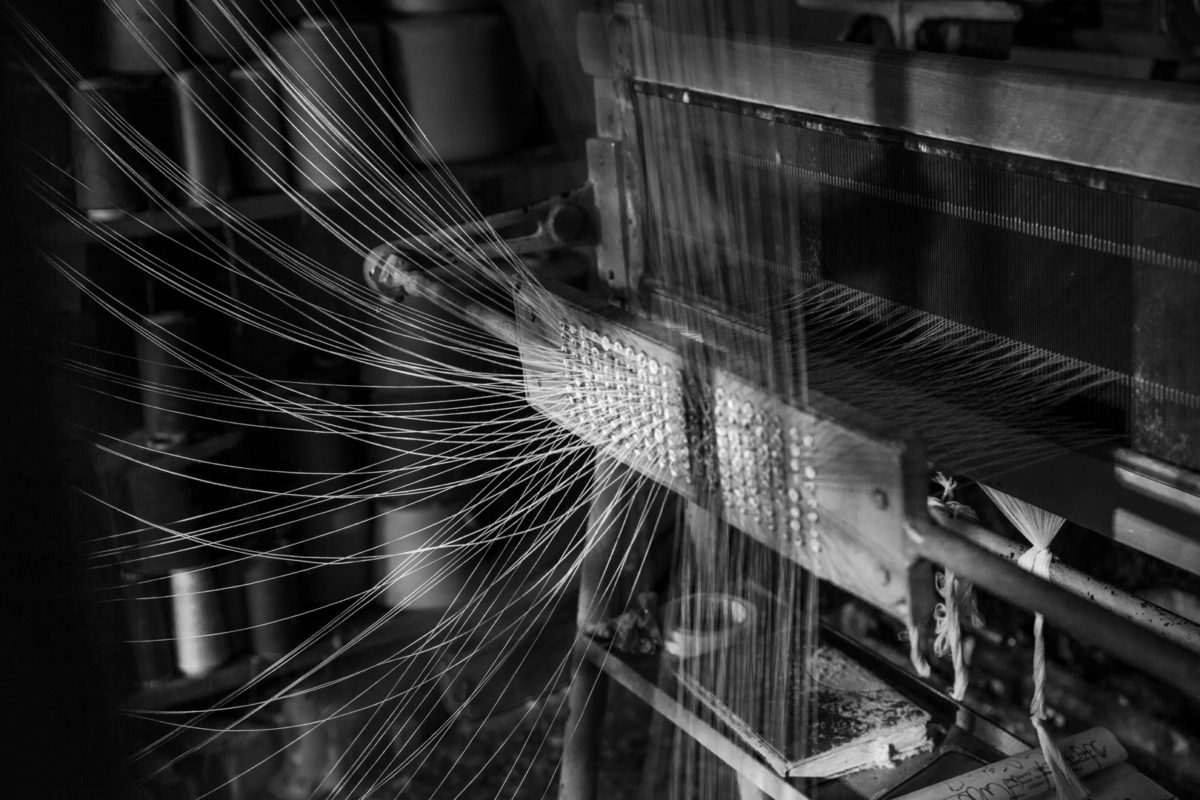
The loom emits an ever-present visual rhythm in the film. How did you want to capture this cadence with the editing of Genesis?
The question of rhythmicity became an obsession as soon as I visited the textile mill. Its space was both deafening and hypnotic. At the same time, many preparatory phases of the textile production were characterized by quiet, ritual actions in an atmosphere that felt ostensibly religious and very dense. I wanted to stay true to the noise as much as I didn’t want to lose that silence, so I directed the editor, Mattia Soranzo, with a long list of storyboards and timecodes, in order to produce a precise visual structure able to condense the long production process in a few minutes, without turning the video into a sterile documentation. I approached the editing like an engineer, as if the film were itself a machine marked by moments of silence and moments of noise, each scene a cog that had to move, do its work, and then activate another cog, another scene.
This rhythm also extends to the sound design of the film. What are the key sonic aspects of the Jacquard loom that you were aiming to capture?
With the Jacquard loom we are talking about a two-stories high mechanical beast designed in the 19th century. It is an intimidating apparatus that screams and jumps and moves rhythmically like a possessed body. Its motion, and the sound it produces, is mesmerizing and violent. With the sound engineer, Michele Leuci, we recorded the ambient noises, then we used directional microphones to capture the sound of specific parts of the loom, and then we used contact microphones to capture the same sounds as they traveled through the machine or through the support structures around it. After building this archive of sounds I worked with composer Gabriele Panico to create the soundscape that accompanies the film. I think that the result is very musical, despite the fact that all the sounds in the film are actually sounds recorded in the textile mill.
Genesis reminds me of seminal experimental films like Mechanical Principles (Ralph Steiner, 1930), Man With a Movie Camera, or Ballet Mécanique that highlight the aesthetics of mechanical movement. How did you want to emphasize the visual beauty of the Jacquard loom’s mechanics, and were you inspired by any similar work from early experimental cinema?
I certainly had these films in mind. We discussed them at one of the first dinners with the film crew. I realized early on that the best way to emphasize the motions of the mechanical loom had to resemble the curiosity and excitement with which Dziga Vertov filmed the mechanisms of modern life in 1929. This is just one of my many sources of inspiration, but I am glad it shows.
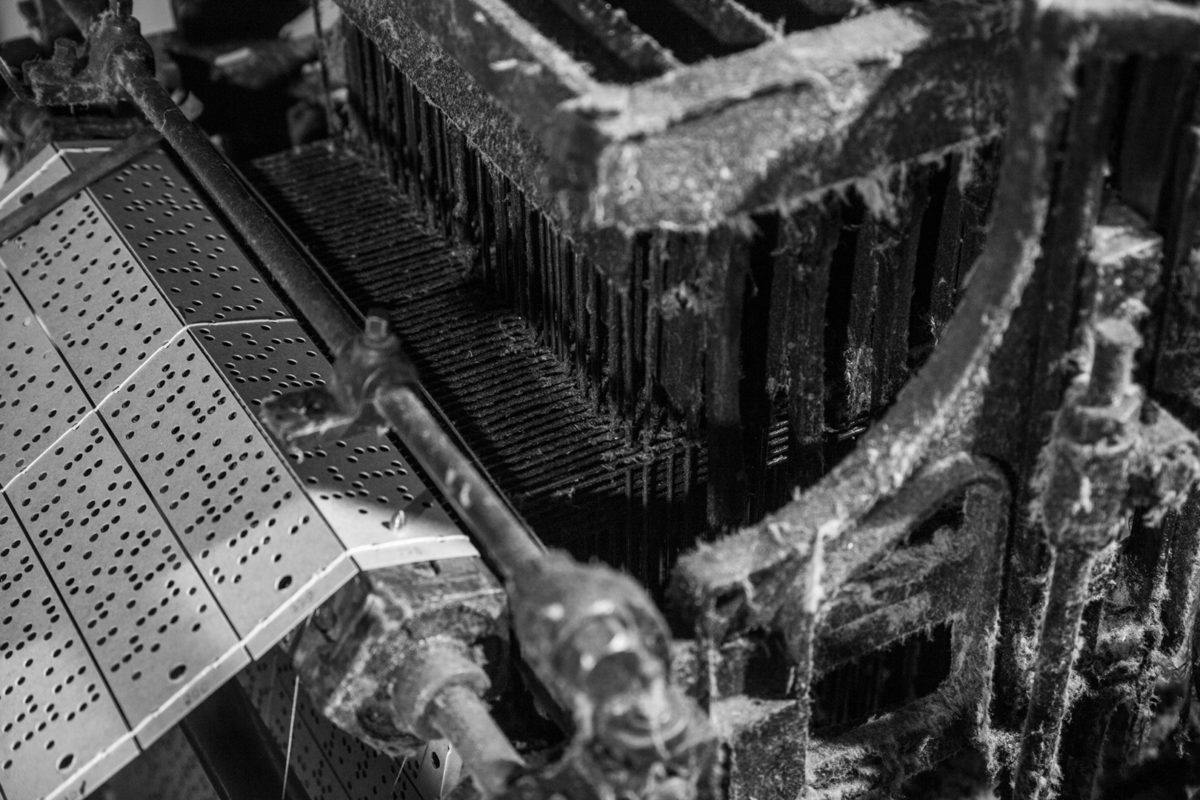
Why make this a year-long performance?
This had to do with the time necessary to figure out all the steps necessary in the process; with solving all the unexpected complications that came up throughout the production; with getting undisturbed access to the textile mill; and with the way the funding for this art project came through. However, in an unintended symbolic gesture, the textile was produced over the course of nine months. A genesis and a gestation.
How does Genesis factor into your greater installation, “rs548049170_1_69869_TT?”
It is an indispensable part of it, and the film was first imagined as part of the video installation composed of the film itself, the textile that appears at the end of the film for a few instants, and the Jacquard loom my mom worked with. Whereas the textile and the loom provide access to the means and the result of my artistic process, the film provides access to the process itself. It allows people to immerse themselves inside the work in a deeper way.
RIIFF 2021 Q&A: Catherine Slilaty’s Moundform (2020)
The loom radiates an almost mystical atmosphere because there is no explanation for what the machine is doing. Was that an intentional part of the presentation for you?
I don’t think that maintaining a mystical atmosphere and providing an explanation are mutually exclusive options. Genesis is part of a large body of works that includes an installation, a book, and several tapestries, among other things. Although every artwork can be appreciated by itself, when considered in isolation all the artworks are quite mysterious. We could say that the number of questions that each artwork provokes is inversely proportional to the number of artworks that someone has experienced. A full immersion in the project provides many possible explanations, but without losing that magical atmosphere. This is my way of constructing layered experiences, engaging people in different ways: through the visual, auditory, spatial, affective, conceptual, and so on.
In the description of Genesis you say that “to best capture and render the flow of emotion and the mechanical energy set in motion by this project I realized that I had to make a film.” What makes film the best medium to communicate this idea?
I wanted to replicate and render the sensorial experiences of my mom’s labor through a medium able to capture and communicate as much of it as possible. Since the production was process-based, I needed a medium well suited to record and communicate this process. I knew I could use the filmic medium to turn my idea into a tangible artwork, similarly to how I used film in the past to make visible other kinds of nonhuman energy. Furthermore, as my mom re-produced my own “code” through the loom I wanted to be there, to see everything; I wanted simultaneously to document this work, “my new genesis,” knowing that I was symbolically already in the work, but I also wanted to be out of it, observing the process from the outside and from every possible angle. Only film could provide this multiplicity of points of view.
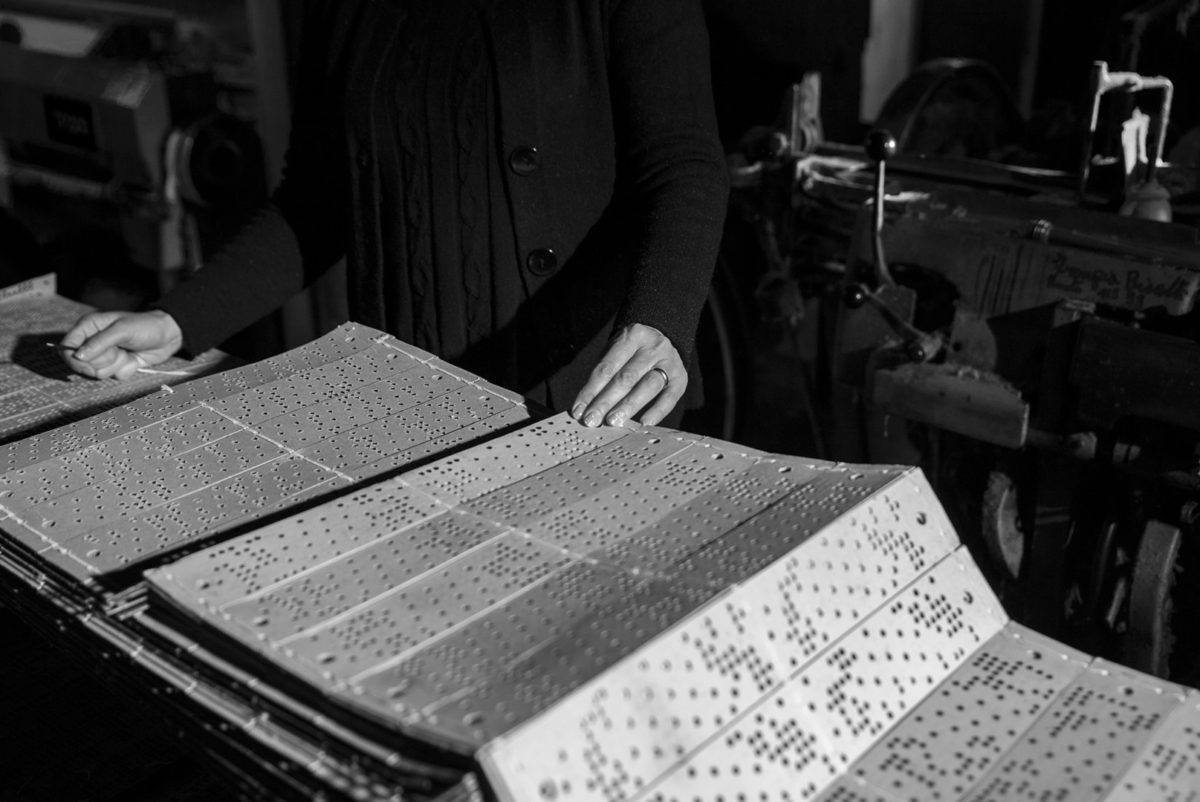
Can you expand on how the film is paying tribute to the contribution of female workers, and weavers in particular, in history?
First of all, by highlighting the fact that without the labor of anonymous women workers and of visionaries like Ada Lovelace, the history of computational technology would be radically different. Since Genesis is a somewhat abstract film I could only refer to this larger history by way of suggestion. But it is not a coincidence that the whole film contraposes the labor of a single woman to a machinic apparatus representing the beginning of industrialized computation. The only human presence in the film is my mom: a weaver and a worker. However, this does not even begin to exhaust the topic, which I have addressed more in-depth in the first public presentation of the project (The Other Shapes of Art: Arte, DNA, tessitura e tecnologie al femminile). Further moments of reflections are to be found in my artist book rs548049170_1_69869_TT. In the chapter “Penelope’s Nights: Weaving as a Technical Mode of Existence,” Ellen Harlizius-Klück delves into the ancient philosophical roots of weaving. Carla Petrocelli, in turn, discusses the historical development and the contribution of seminal women at the intersection of weaving and computer technology in her chapter “The Art of Weaving Code: The Jacquard Loom, the Analytical Engine, and Women’s Work.” Finally, Ursula Wolz discusses some generative possibilities at the intersection of digital coding and textile designs in “Code Crafting as Generative Design.”
You also say that the film is ultimately a tribute to your mother. How was her experience working with the loom? What was it like for you to collaborate with your mother on this performance?
This is the most difficult question. It would be impossible to make justice to the affective relationship with my mother in an exhaustive way in so little space. I can say that, on a personal level, we are both reciprocally grateful for what this project made possible. My mom has worked with threads and fabrics her entire life and is deeply passionate about the world of textile. She was my first technical consultant for this work, and even before diving into the world of 19th century textile looms, I spent time in her studio using her sewing and embroidery machines to test some possibilities. This project gave her an opportunity to expand her knowledge of textiles, of working with massive machines she had never seen, and of learning more about the history of the medium she loves. Meanwhile, I felt extremely lucky that I could share this experience with someone I love. Nowadays it is the rarest thing.
Genesis by Emilio Vavarella. Trailer from Ramdom on Vimeo.
Stay up to date with all things Split Tooth Media and follow Robert on Twitter
(Split Tooth may earn a commission from purchases made through affiliate links on our site.)

